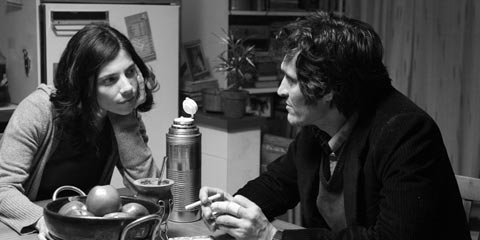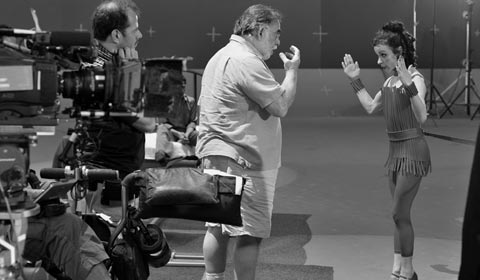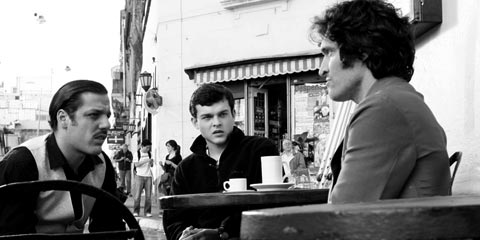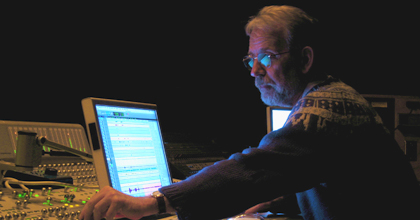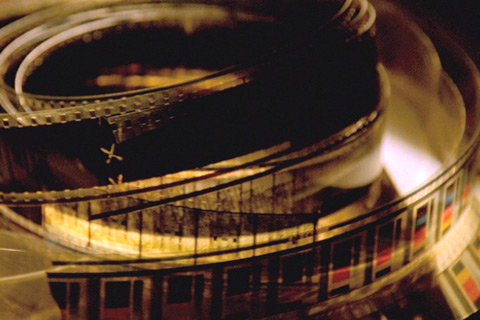
Last update : January 18, 2014
NOTE: This post has been changed into a page on the top header, called “Film Stories”. Further updates will be made on that page.
I’ve had the good fortune, thanks to my work with Videography and Digital Video magazine, to interview an inspiring collection of some of the best film editors in the world. You can click on the “filmmakers” category on the side panel to access these stories, but I’ve aggregated them here for easy access here.
These interviews cover a wide range of feature film styles. The interviewees were gracious enough to share their experiences with creative challenges and how they leveraged editing technology to get the job done. For those keeping a tally, Avid Media Composer and Apple Final Cut Pro are well-represented, along with “cameos” by Lightworks. Even Adobe’s tools make several appearances. Although I don’t consider myself in the same league as most of these luminaries, I’ve included a few projects of mine, which happen to fit nicely into the world of indie filmmaking.
I hope you will take the time to revisit these articles and pick up some tips that might benefit your own personal style. Enjoy!
Directed by Martin Scorsese
Featured in the post – Thelma Schoonmaker, Scott Brock
Directed by David O. Russell
Featured in the post – Jay Cassidy, Crispin Struthers, Alan Baumgarten
Directed by Ethan and Joel Coen
Featured in the post – Katie McQuerrey
Directed by Mark Levinson
Featured in the post – Walter Murch
Directed by Zal Batmanglij
Featured in the post – Andrew Weisblum and Bill Pankow
Directed by Peter Jackson
Featured in the post – Jabez Olssen
Directed by David Mamet
Featured in the post – Barbara Tulliver
Directed by Kathryn Bigelow
Featured in the post – Dylan Tichenor and William Goldenberg
Directed by Andy and Lana Wachowski and Tom Tykwer
Featued in the post – Alexander Berner
Directed by Rian Johnson
Featured in the post – Ryan Thudhope
Directed by Philip Kaufman
Featured in the post – Walter Murch
Directed by Tony Gilroy
Featured in the post – John Gilroy
Directed by Wes Anderson
Featured in the post – Andrew Weisblum
Directed by Alexander Payne
Featured in the post – Kevin Tent, Mindy Elliott
The Girl with the Dragon Tattoo
Directed by David Fincher
Featured in the post – Angus Wall, Kirk Baxter, Tyler Nelson
Directed by Martin Scorsese
Featured in the post – Rob Legato, Thelma Schoonmaker
Directed by Ralph Clemente
Featured in the post – Oliver Peters
Directed by Vera Farmiga
Featured in the post – Colleen Sharp, Jeremy Newmark
Directed by Danny Boyle
Featured in the post – Jon Harris, Tamsin Jeffrey
Directed by David Fincher
Featured in the post – Angus Wall, Kirk Baxter, Michael Cioni, Tyler Nelson
Directed by Don Hahn
Featured in the post – Vartan Nazarian, John Ryan, Ellen Keneshea
Directed by Alex Gibney
Featured in the post – Allison Ellwood
Directed by Francis Ford Coppola
Featured in the post – Walter Murch
Directed by Jon Binkowski
Featured in the post – Oliver Peters
The Curious Case of Benjamin Button
Directed by David Fincher
Featured in the post – Angus Wall, Kirk Baxter
Directed by Talia Osteen
Featured in the post – Oliver Peters
Encounters at the End of the World
Directed by Werner Herzog
Featured in the post – Brian Hutchings
Directed by Chris Nolan
Featured in the post – Lee Smith
Directed by Martin Scorsese
Featured in the post – David Tedeschi, Rob Legato
Directed by Tim Burton
featured in the post – Chris Lebenzon
directed by Peter Bogdanovich
Featured in the post – Mary Ann McClure
Directed by Ethan and Joel Coen
Featured in the post – Ethan and Joel Coen
Directed by Francis Ford Coppola
Featured in the post – Walter Murch, Sean Cullen
Directed by Paul Haggis
Featured in the post – Jo Francis
Directed by Paul Greengrass
Featured in the post – Chris Rouse
Directed by Jon Poll
Featured in the post – Jon Poll
Directed by Brad Bird
Featured in the post – Darren Holmes
Featured in the post – Eli Nilsen
Directed by Edgar Wright
Featured in the post – Chris Dickens
Directed byRay Tintori
Featured in the post – Ray Tintori, Par Parekh
Directed by Mike White
Featured in the post – Dody Dorn
Directed by David Fincher
Featured in the post – Angus Wall
Directed by Deborah Scranton
Featured in the post – Steve James
Directed by Vondie Curtis Hall
Featured in the post – Teri Shropshire
Directed by Paul Haggis
Featured in the post – Hughes Winborne
Directed by Paul Rachman
Featured in the post – Paul Rachman
Directed by Reza Badiyi
Featured in the post – Oliver Peters
Directed by Sam Mendes
Featured in the post – Walter Murch, Sean Cullen
Directed by Kyle Jackson
Featured in the post – Kyle Jackson
Directed by Martin Scorsese
Featured in the post – Ron Ames, Rob Legato
Articles originally written for Videography and Digital Video magazines (NewBay Media LLC)
©2011, 2012, 2013, 2014 Oliver Peters

